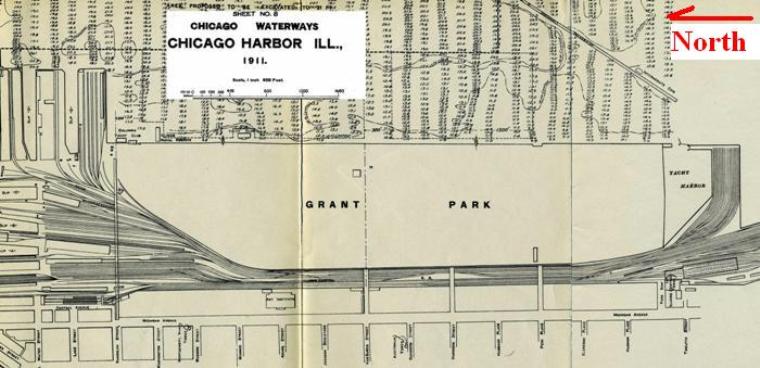Previous Post: History of Grant Park, 1900-1908
In 1909 Montgomery Ward won his long legal battle to keep Grant Park “Forever Open, Clear, and Free.” Buildings could not be built in the original Lake Front Park without the unanimous consent of the building owners across Michigan Avenue. Ironically the open grassy area proved ideal as an airfield—to which use it was soon put.
Due to Ward's victory, most future development in Grant Park would be underground. Actually in 1909, most of Grant Park was barely above water, so future structures would be built and earth heaped over them—thus making them "underground." This applied to even mundane buildings such as restrooms.
That same year the Plan of Chicago was published. The Plan envisioned a massive amount of lakefill to create new parkland. It also envisioned a huge civic center in Grant Park which was never built due to Montgomery Ward's opposition.
In 1911-12, agreements between South Park Commissioners and the Illinois Central Railroad on filling the lake south of 12th Street were signed. The emphasis had changed to completing the Plan of Chicago, and work in this area included Northerly Island, an offshore island included in the plan.
The following 1911 map from the Army Corps of Engineers shows the shoreline as 1800 feet beyond Michigan Avenue, 300 feet west of the current shoreline. Approval had been given to fill in the small yacht harbor on the south.
In 1914, the Commissioners received approval from Congress to fill in another 300 feet. This extended the park to 2100 feet beyond Michigan Avenue—essentially the current boundary. It was reported that wagon teams and dredges were standing by to begin the work.
Among the many proposals floating around was one by Mayor Harrison to build an underground parking garage in the area between Randolph, Michigan Avenue, the tracks and Monroe. The electric vehicle owners wanted to establish an open air parking area east of the tracks. The underground garage opened 40 years later, the open air lot in 1921.
By now Loop parking had reached crisis proportions. Chicago had 377 automobiles in 1900. By 1916 there were 65,651—exceeding the number of horse drawn vehicles for the first time. Street parking was banned in the Loop. People parked in the wide open spaces of Grant Park. They then complained when their cars were stolen and stripped.
The Commissioners had authority over the parks and boulevards, including Michigan Avenue. They had their own park police force. They thus were caught up in the automobile controversies.





Add a comment to: History of Grant Park, 1909-1914